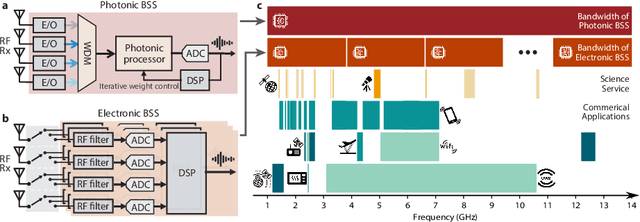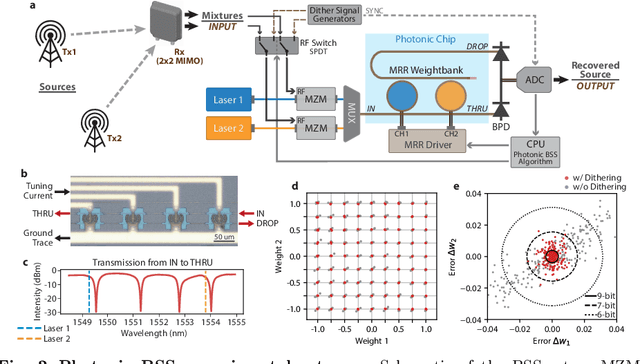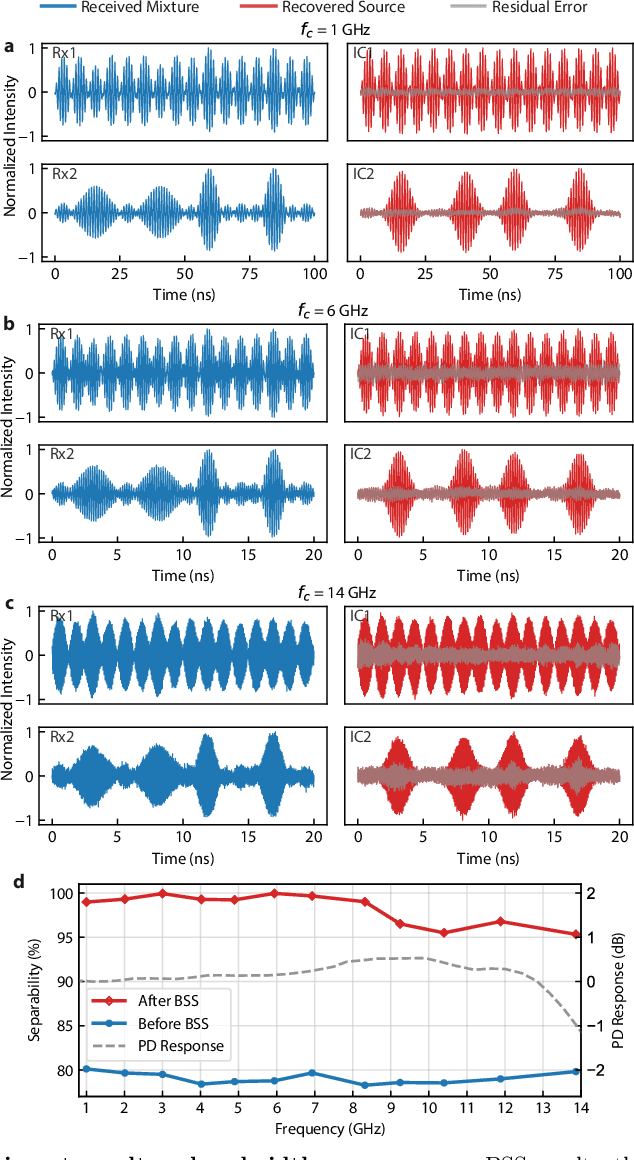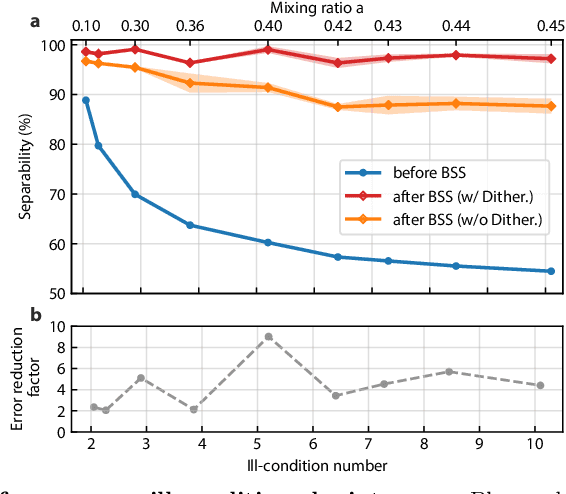Paul Prucnal
Wideband physical layer cognitive radio with an integrated photonic processor for blind source separation
May 17, 2022



Abstract:The expansion of telecommunications incurs increasingly severe crosstalk and interference, and a physical layer cognitive method, called blind source separation (BSS), can effectively address these issues. BSS requires minimal prior knowledge to recover signals from their mixtures, agnostic to carrier frequency, signal format, and channel conditions. However, the previous BSS implemented in electronics did not fulfill this versatility due to the inherently narrow bandwidth of radio-frequency (RF) components, the high energy consumption of digital signal processors (DSP), and their shared weaknesses of low scalability. Here, we report a photonic BSS approach that inherits the advantages of optical devices and can fully fulfill its "blindness" aspect. Using a microring weight bank integrated on a photonic chip, we demonstrate energy-efficient, WDM-scalable BSS across 13.8 GHz of bandwidth, covering many standard frequency bands. Our system also has high (9-bit) accuracy for signal demixing thanks to a recently developed dithering control method, resulting in higher signal of interest ratios (SIR) even for ill-conditioned mixtures.
Sub-Nyquist Sampling with Optical Pulses for Photonic Blind Source Separation
Jul 25, 2021
Abstract:We proposed and demonstrated an optical pulse sampling method for photonic blind source separation. It can separate large bandwidth of mixed signals by small sampling frequency, which can reduce the workload of digital signal processing.
A Photonic-Circuits-Inspired Compact Network: Toward Real-Time Wireless Signal Classification at the Edge
Jun 25, 2021



Abstract:Machine learning (ML) methods are ubiquitous in wireless communication systems and have proven powerful for applications including radio-frequency (RF) fingerprinting, automatic modulation classification, and cognitive radio. However, the large size of ML models can make them difficult to implement on edge devices for latency-sensitive downstream tasks. In wireless communication systems, ML data processing at a sub-millisecond scale will enable real-time network monitoring to improve security and prevent infiltration. In addition, compact and integratable hardware platforms which can implement ML models at the chip scale will find much broader application to wireless communication networks. Toward real-time wireless signal classification at the edge, we propose a novel compact deep network that consists of a photonic-hardware-inspired recurrent neural network model in combination with a simplified convolutional classifier, and we demonstrate its application to the identification of RF emitters by their random transmissions. With the proposed model, we achieve 96.32% classification accuracy over a set of 30 identical ZigBee devices when using 50 times fewer training parameters than an existing state-of-the-art CNN classifier. Thanks to the large reduction in network size, we demonstrate real-time RF fingerprinting with 0.219 ms latency using a small-scale FPGA board, the PYNQ-Z1.
 Add to Chrome
Add to Chrome Add to Firefox
Add to Firefox Add to Edge
Add to Edge